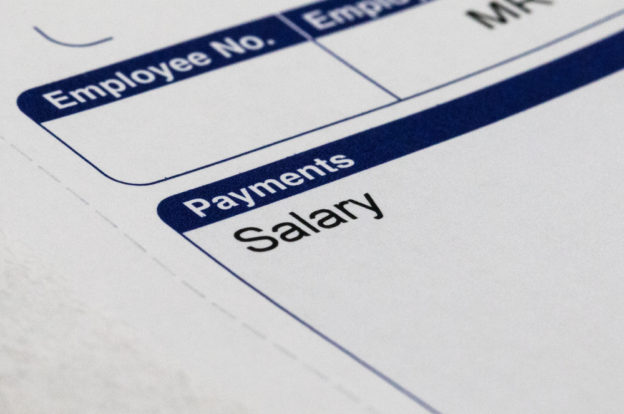 By Jude Biggs
By Jude Biggs
As more and more employers use new analytical tools for recruiting and hiring, the potential exists for employment decisions to become more fair, objective and unbiased. But could the use of big data and technology-driven decision-making disfavor candidates who lack a robust digital footprint? These are questions that the Equal Employment Opportunity Commission (EEOC) will continue to explore after an initial “big data” public meeting in Washington, D.C. in October.
What Is “Big Data?”
The EEOC refers to “big data” as the use of algorithms, data scraping of the internet, and other technology-based methods of evaluating huge amounts of information about individuals. Big data can include computer algorithms that are based on various factors designed to correlate to successful characteristics on the job; for instance, a model may look for longevity on the job, degrees from particular institutions, membership in certain organizations, or a multitude of other factors. Computer models then use this seemingly objective criteria to scan the internet for individuals possessing the desired characteristics in “passive” candidate searches. Other types of predictive or talent analytics, based on the harvesting of a wide range of empirical data, are being incorporated into HR recruiting and decision-making platforms.
According to a recent survey of Society of Human Resource Management (SHRM) members, about one-third of respondents reported that they use big data in employment. The proportion was even higher among larger employers.
Why Does the EEOC Care About Big Data?
The EEOC is trying to get ahead of this issue by making sure that employers’ use of technology-driven HR tools does not lead to discrimination in the hiring process. EEOC Chair Jenny Lang noted that while big data has the potential to drive innovations that reduce bias in employment decisions, “it is critical that these tools are designed to promote fairness and opportunity, so that reliance on these expanding sources of data does not create new barriers to opportunity.”
What Are The Potential Advantages of Technology-Based HR Decisions?
Technology is here to stay so the question is not will it be used in the HR context but rather how should it be used to best achieve employers’ goals. Using technology and big data can result in many positive outcomes, including that it:
- may help identify non-traditional candidates who would not have been considered for a particular job previously
- can help overcome implicit and explicit prejudice and bias in the workplace
- can improve person-job fit
- may increase diversity in the workplace
- may expand the pool of candidates with the qualities necessary to succeed
- may reduce employee turnover.
In fact, given the global nature of online data, it is possible for certain types of employers to increase their diversity dramatically, by being able to cast a larger net to find applicants.
What Is The Potential Downside of HR’s Use of Big Data?
As with anything technology-related, the outcome is only as good as the computer program, factors selected, and data used. Many algorithms focus on correlation of successful characteristics without looking to specific job requirements. For example, a set of characteristics of high-performing employees may reflect the group’s demographics (for instance, graduation from an Ivy League school) rather than their skills or abilities to perform certain jobs (for example, leadership shown during a military deployment or creation of a successful program serving the poor). In such cases, algorithms may match people characteristics, but not job requirements.
Using big data may perpetuate past discrimination. If an algorithm is based on looking for applicants with the same characteristics as those possessed by existing managers, secretaries or high-tech programmers in a company, then the algorithm may limit diversity. Similarly, certain talent-seeking algorithms may rely too much on the make-up of the company’s current staff, meaning that minorities or other groups not currently represented in the workforce continue to be passed over.
Think about whether individuals who do not have a robust online presence will be at a disadvantage in the new, data-mining recruiting world. Individuals with lower incomes or in rural areas may not have ready access to computers, lessening their ability to engage digitally. Other individuals may choose not to engage in many online activities. Or, others who are at the start (or end) of their careers may not have established much of an online presence. Employers who focus only on technology-driven programs to identify and hire candidates may miss out on large groups of qualified individuals who simply lack significant online experience that is discoverable by algorithms.
In addition, the collection of other data points, such as attendance or leave-related data, may discriminate against disabled individuals, giving rise to ADA concerns. Moreover, such data, coupled with information about gaps in employment, could disproportionally hurt female candidates who are more likely to have taken time off of work for pregnancy or child-rearing reasons. Read more >>
 Holland & Hart labor and employment attorneys Dora Lane and Steve Gutierrez discuss potential impacts on employers and employees of the hold on the proposed Overtime Rule. Dora Lane was interviewed on Reno’s Channel 2 News. Steve Gutierrez talked with KDVR Fox 31 in Denver.
Holland & Hart labor and employment attorneys Dora Lane and Steve Gutierrez discuss potential impacts on employers and employees of the hold on the proposed Overtime Rule. Dora Lane was interviewed on Reno’s Channel 2 News. Steve Gutierrez talked with KDVR Fox 31 in Denver.

 By
By 

 By
By 
 By
By 
 By
By 
